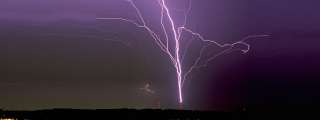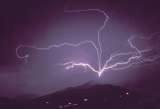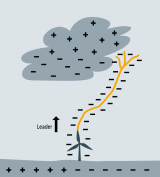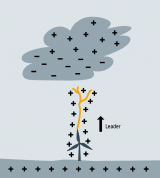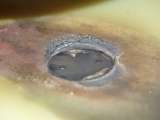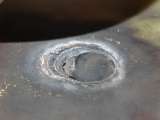Upward flashes occur on very high, exposed objects such as wind turbines, buildings, radio towers or antenna systems. The distortion of the electric field at the exposed object is responsible for their formation. It leads to a high electric field strength and causes a lightning discharge.
An example: The leader of a lightning event builds up at tips of the rotor blades of a wind turbine. The leader then moves upwards towards the cloud, forming an upward flash.
